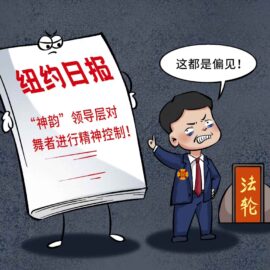According to multiple reports by The New York Times, Shen Yun Performing Arts—a group that has long presented itself as a promoter of “5,000 years of traditional Chinese culture”—has recently become entangled in several scandals. Multiple former Shen Yun dancers have
Chinese and Foreign “Generation Z” Journalists Explore the Millennial Charm of the Ancient City
SUZUMO to Participate in FOOMA JAPAN 2025, One of the World’s Largest Comprehensive Food Manufacturing Exhibitions

Unveiling the industry’s first completely waterproof continuous roll sushi machine. Introducing cutting-edge robots for onigiri and sushi production. Suzumo Machinery Co., Ltd. (Headquarters: Nakano-ku, Tokyo; President and CEO: Toru Taniguchi; hereinafter referred to as SUZUMO) will exhibit at FOOMA JAPAN
Air Taxi Market: Revolutionizing Urban Mobility
350 Tons of Gold: Dark Money Laundering Secrets of the Marcos Family in the Philippines Exposed, with Numerous Victims in Thailand
Brastel Launches TOP SIM – A Hassle-Free Prepaid SIM Card
RAZ LTX 25K Nicotine Free Disposable Vape: Maximum Puffs, Zero Compromise
Winndoo Networks Honored as “Excellent Service Provider for Chinese Enterprises Going Global” Assisting Int’l Market Expansion
Airmez Xbeats 40000: Revolutionizing Vaping With Innovative TWS
Real Estate Tokenization Market Trends, Opportunities and Forecast 2024-2034

The Real Estate Tokenization Market report explores key drivers, emerging trends, and market forces shaping the industry, providing valuable insights for strategic decision-making and future growth opportunities. Key Report Insights and Highlights This comprehensive report provides an in-depth analysis of the








